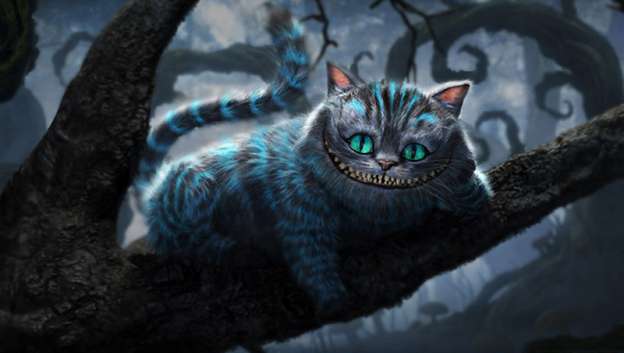The Trickster Role – The 7th function referred to as the trickster, or deceiving role, is a reaction against being controlled or put upon. It mirrors the eternal child of the tertiary function and is triggered when the tertiary function is threatened or bullied by the 7th function either through other’s use of it or by direct experience. It is considered a blind spot within the psyche and regarded as the weakest function overall – even weaker than the inferior function. Engaging it is an “all or nothing” affair – it is active only to be troublesome and mischievous but when it is, it can also provide comic relief.
It’s perspective is like that of a bad child; either dealing with one, playing tricks and binding the ego, or then being one to get back at or rebel against the threat. Where the tertiary role tells us what we want to hear, the Trickster tells us what we don’t want to hear! We feel “bound”, and then, in a rebellious fashion, try to turn the tables by using it for deceiving, double-binding, trapping others.
What is trying to be brought into consciousness is the perspective orientation opposite the dominant one our “child” complex runs to. In severe trauma, the Self uses it to try to keep information out of consciousness, and bind a person from taking action that might expose the ego to more damaging content.
Trickster Role: Extraverted Sensing
INTP
INFP
When Se is trickster, then Si is puer, and internalized tangible experience is what the ego childishly falls back on to maintain its introverted attitude. If this is challenged, the ego will use current tangible reality to get others off his back by pointing at others (“you do it too” defense {triggered when the ego is intimidated through the puer by memory-based fear of punishment}). “wanting to have its own way”: wanting to see things for myself, and having concrete evidence for things such as spirituality.
- INxP’s Might feel ‘double-bound’ by tangible reality (physical things, etc), and then it seems to become the perfect vehicle to try to turn the tables on others with, or to be silly with.
- People performing rigorous stunts are clowns; people pointing out tangible reality that goes against the ego seem like “bullies”.
- Dwell on the perceived “realities” of a situation; act highly impulsively.
- Firmly accepted understandings and conceptions feel threatened by new sensory data and developments.
- New facts or data casts doubt on the validity of personal memories.
- Seeks to gain skills or experiences in response to past pain or humiliation.
- May engage in reckless and thrill-seeking behavior that they in turn project onto others.
- May be in denial about certain realities that may be inconvenient and clash with held beliefs.
- Distrustful of the unfamiliar and not outgoing.
Trickster Role: Extraverted Feeling
INTJ
ISTJ
Fe as trickster: The person finds relief through universal/personal humane values. External set values are appealed to (often in an overgeneralized fashion) when motivating someone to do what’s important, particularly if the person’s behavior is affecting them in some way.
- IxTJ’s Might feel ‘double-bound’ by aspects of social values, and use them to trap others into behaving or conforming.
- IxTJ’s might criticize others’ social behavior to scare them by saying they are bringing rejection on themselves.
- Personal values may feel compromised by societal expectations.
- Employs the values of the group in a sarcastic and mocking manner.
- May criticize others for selfishness and putting their needs above the needs of the group.
- May try to help others but instead end up annoying them and getting in the way.
- May try to shame others and make them feel not included.
Trickster Role: Introverted Feeling
ENTP
ESTP
Fi as trickster: Social acceptance will be a vulnerable spot for them. If this is intimidated, they will use universal humane values to get others off their backs.
- ExTP’s Might feel ‘double-bound’ by a focus on individual personal values, and use them to trap others.
- ExTP’s see opponent’s passion in a dispute and try to outdo it themselves in a childish fashion.
- Criticize others for not thinking for themselves.
- View and label others as fake and superficial.
- Devalues and resists popular social fads as being meaningless.
- Inner values and impressions are artificial and pastiche.
- Valuations of truth and clarity are distorted and specious.
- May try to champion a cause with unsound values and principles.
- People who are aloof and reserved are seen as self centered and arrogant.
Trickster Role: Introverted Intuition
ESTJ
ESFJ
Ni as trickster shadows Ne as child. Imaginativeness using multiple possibilities is a playful, childlike endeavor. If this is intimidated, the person will then try to bind the other person with negative premonitions of what will happen. They may act as if it is inevitable or as good as having occurred already, and become very childish.
- ESxJ’s Might feel ‘double-bound’ by unconscious images or inferences, and use them to trap others into confirming their worst fears.
- ESxJ’s see symbolism and inferences as silly, yet unconsciously use them themselves under stress, in a “bratty” fashion.
- Feels confused or lost with unconscious conceptual patterns and projects it onto others
- Tries to discredit others by proving the confirmation of their worst intuitions.
- People using (Ni) seen as narrow-minded and fatalistic.
- Predicts negative outcomes for others.
- Defies the proclamations of others with proclamations of their own.
- Criticizes people who try to predict their future.
Trickster Role: Extraverted Intuition
ISFP
ISTP
Ne as trickster: The person finds relief in using their imagination to perceive the future. If this is intimidated, they would try to tie others down with multiple external interpretations.
- ISxP’s Might feel ‘double-bound’ by alternative hypothetical possibilities.
- ISxP’s See people tossing out alternative possibilities and meanings as bad children or clowns.
- Feels lost with emergent inferences, concepts and possibilities and projects it onto others.
- Tries to outdo others by envisioning more possibilities than them.
- Criticizes others for fruitless theorizing and useless ideas.
- Interpret situations in a naive way, inferring malice where none exists.
- Over-reading between the lines, often misinterpreting someone’s actions and seeing negative intentions where there are none.
Trickster Role: Introverted Sensing
ENFJ
ENTJ
Si as trickster: Sensory pleasure is a source of childlike relief. If this is threatened, they will reference memorized experiences to get the person off their back.
- ENxJ’s Might feel ‘double-bound’ by memorized facts that go against ego, and use them to trap others.
- ENxJ’s People who dwell on the past (instead of moving on) are “puerile”, and yet they might distort it to get them off their back:
- Feels trapped by stored facts and project it onto others including making them look crazy for bringing them up; e.g. the past.
- Cling to what they are used to; repeat themselves in ritualistic fashion.
- Memories are inaccurate; the recollection of events is unreliable and they project this onto others.
- May accuse others of living in the past.
- Get stuck in impressions of how things were and resist change which they project onto others.
- Critical of other’s past performances and overuses negative experiences to inform decisions.
- Can hold a distorted perception of the past and a fixation on its relation to the present.
Trickster Role: Extraverted Thinking
ISFJ
INFJ
Te as trickster will shadow the Child, which delights in technical models and frameworks. If someone intimidates this, it will turn to external technical principles to strip down the offender.
- IxFJ’s Might feel ‘double-bound’ by external logical order, and make mistakes trying to implement it themselves.
- IxFJ’s see people organizing the environment logically as “bad children”:
- Feels confused by externally set technical order and make mistakes with it, and projects this onto others.
- Can become critical, and put down others for disorderliness, illogic, or inefficiency.
- Can become competitive about organizing things and using an efficient systematic approach.
- Lash out if others criticize their logic with emotional arguments, and make subjective arguments.
- Criticizes others for spending unnecessary time establishing order, planning.
- Misguide themselves and others in the process of organizing for efficiency.
Trickster Role: Introverted Thinking
ESFP
ENFP
Ti as trickster: External technical efficiency is looked up to with childlike innocence. The person will turn to the (individually determined) underlying technical principles behind it as a last resort if intimidated. Otherwise, it is seen as puerile detail.
- ExFP’s: All this archetype stuff (“puers trigger witches”, etc. logical frameworks) is just excuses for bad behavior (I actually had one say this to me!):
- Feels confused or lost with technical variables and projects it onto others.
- ExFP’s Might feel ‘double-bound’ by variable logical principles and use them to trap others or be silly.
- May make statements or believe in ideas that are contradictory and illogical and project this on others.
- Caught up in pointing out others’ inconsistencies, with a dogmatic tendency to adhere to one principle rather than seeing its distinctions.
- May impose their ideas about the models and principles they’ve adopted, categorizing everything simplistically and robotically following the principles.
- Criticizes others for not articulating their operating principles.
- Accuses others of being stuck in the models and frameworks they have learned or adapted.
- May become lost and confused when trying to analyze why things work and may project this onto others.
related posts:
Jetta Moon is an artist, writer and astrology blogger. This site gives him an excuse to explore, learn and write about the world of psychology, astrology and various personality type systems.
Latest posts by Jetta Moon
(see all)
Related






One thought on “The Trickster Role Of Each Myers Briggs Type”